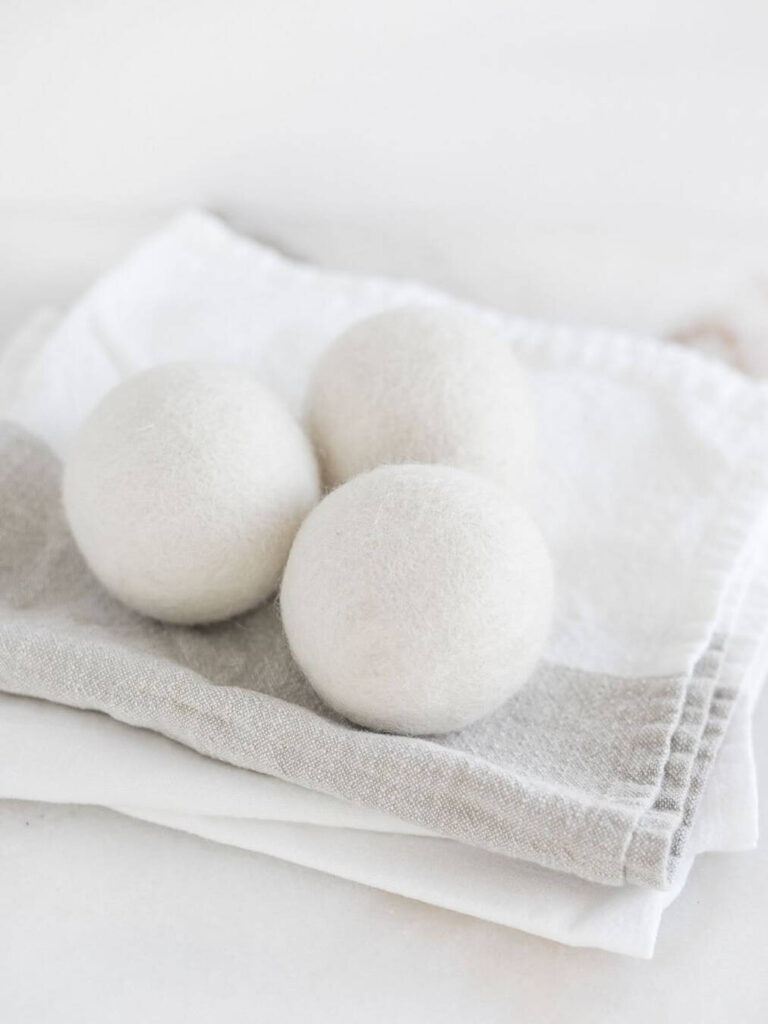Out of all the chores, laundry is by far my least favorite. I don’t particularly enjoy waiting around for the washer and the dryer to finish. Folding isn’t any fun either. It’s so terrible that I actually need recovery time. Only then can my clean laundry finally go in their designated spaces in the closet. Regardless of how much I dread it, it has to get done. So might as well do it in a non-toxic, eco-friendly way. Right?
I have the tips for every cycle of your clean laundry routine — the wash, dry, and wear.
WASH
Soap: phosphates and surfactants
Washing is potentially the most toxic phase. Here we use chemicals that get mixed with our fresh water and leave residue on our clothes. These are chemicals that we know clean but don’t know anything else about –not even their names. Unlike food and cosmetics, cleaning products are not required by federal law to disclose their list of ingredients. That’s why I think it’s essential to find a transparent brand that is proud of the ingredients they use and are proud enough to share them with shoppers.

@girlfriend
Make better choices with unscented or naturally scented detergents. Added scents are packed with harmful toxins; in fact, 1 / 3 of the substances used in fragrances are toxic. If you want some sort of smell, opt for brands that solely use essential oils like Zum Clean, a low-sudsing, and highly concentrated plant-based laundry soap (not detergent).
I love cruelty-free brands! If a brand doesn’t test on animals, they’ll for sure let you know. However, if they do test on animals, the same can’t be said. I wish it were the other way around. But until we live in a perfect world, we shoppers always have to check the label. A Leaping Bunny certification promises that both the finished product is not tested on animals, and neither are its ingredients.
any leading detergents have pollutants, like phosphates and surfactants, that are harmful to human health and the environment. Phosphates speed up eutrophication, which leads to depleted oxygen levels in the water. This imbalance makes habitats cloudy and unlivable.
Other pollutants like surfactants are included in detergents to make them more effective. But, surfactants like quaternium-15 release formaldehyde, a known carcinogen. And others like diethanolamine are linked to skin and eye irritation and possibly liver problems. While Nonylphenol ethoxylate (NPE) is extremely toxic to aquatic organisms and is a hormone disruptor. Other chemicals that aren’t so safe include:
- Linear alkylbenzene sulfonates (LAS)
- Petroleum solvent
- Sodium Lauryl Sulfate (SLS)
- Sodium Laureth Sulfate (SLES)
- Optical brighteners
- 1,4 dioxane
- Parabens
- Sulfates
If you’re unsure about the brand you use, try one of these clean laundry soaps: PUR Home, cleancult, or some of the others I share in this blog.

@domsli22
Packaging
Laundry detergent comes in many forms — powders, liquid, pods, and even sheets. For the most part, I use liquid detergent out of habit and comfort of knowing that it works. However, liquid detergent can be made with up to 90% water. Water that I already have flowing through my faucet. As such, this detergent isn’t the most carbon-footprint-friendly.
If you’d like to reduce your carbon footprint, the other options are better. Their packaging makes them more efficient to transport since they are lightweight and slimmer than round, bulky plastic bottles. Here you’ll find some of the top-reviewed laundry detergents without the unnecessary plastic:
- Blueland – Naked plastic-free pods perfect for zero-wasters or aspiring ones.
- Charlie’s Soap – A plant-based powder without any added scents.
- earth breeze – Laundry detergent compressed into powerful eco-friendly sheets.
DRY
I’m not the type of gal to use dryer sheets. I like to keep things simple, and I also prefer to air dry since it saves energy. But, I know some of us do prefer machine drying and like to use a dryer sheet or two (maybe three if you’re like my mom). When you run out of the ones you have, try one of these non-toxic alternatives:
- TRU Earth’s Wool Dryer Balls – Shorten your drying time, naturally. They’ll even last for more than 1,000 loads.
- ATTITUDE – Reusable dryer cloths that replace traditional dryer sheets for up to 300 loads for less static, less waste, less wrinkling

@livelytable
WEAR
Companies use about 1,800 gallons of water to grow the material for a pair of jeans. They need even more water to make the jeans ready for retail — sewing, dyeing, and preparing the fabric. More fashion brands are committed to using initiative technology and recycled water to reduce their impact.
Another way brands can reduce their impact is by actively teaching consumers how to care for their clothes. Because once we buy our jeans, we use an additional 860 gallons of water every year to keep them clean. We can easily reduce our water footprint by 50% if we washed our jeans bi-weekly rather than weekly. If we do it monthly or after ten wears, by 77%.
But, how often should we wash our clothes? If they’re not stained or smelly, here’s a baseline to follow:
- After every wear: Socks, undies, and workout clothes
- After 1-3 wears: Dresses, sweaters, and dressy shirts (you know the ones you had to wear to work before quarantine)
- After 3-4 wears: Bras, blazers, jeans, and pajamas
- After 5-7 wears: Jackets, hoodies, and dress pants
Keep in mind, it’s important to read the how-to-care tags on your clothes to keep them looking as good as new. Doing so will improve their longevity so we can wear what we have rather than buying something new.
I thought I would never see the day, but I’m excited about laundry — excited to see that there are so many good for you, good for the planet brands cleaning up this dirty industry.

